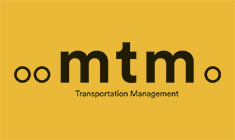Companies derive about 90% of their carbon footprint from the things they buy, meaning from the supply chain. We’re facing a revolutionary change in approach, with sustainability being generated in the supply chain. This new strategy also involves training and communication, fundamental for engagement with businesses’ internal and external stakeholders. We discussed this with Federico Brugnoli, founder and CEO of sustainability consulting company on Spin 360, which is assisting Marazzi in an in-house training programme.
Spin 360 is a sustainability consulting company that also supports companies in training and engagement programmes. How is the world of sustainability changing?
We’re operating in a fast-evolving global context. We have data, scientific proof, that tell us it is more urgent than ever for us to act.
Global warming is one issue but not the only one: overpopulation and microplastics in human cells are no less important. Legislation is moving just as quickly to guide change: Europe is leading the way. Twenty years ago, when I started out in this profession, environmental legislation focused on measuring pollution parameters: emissions, effluents and waste produced by industry. Today we think in terms of ESG, corporate social responsibility, designing products that have to bear end-of-life in mind, lifecycle analysis, the control of supply chains, and risk analysis. It’s a completely different approach.
What actions have to be taken, inside and outside companies, to meet obligations?
Companies derive about 90% of their carbon footprint from the things they buy, meaning from the supply chain. Many companies have invested heavily to reduce their carbon footprint only to realise that a large proportion of their environmental impact comes from the things they buy, and in fact electricity is 1% of their footprint. So we are facing a fundamental change in approach: companies have to work with their suppliers. The future of sustainability is created in the supply chain, and this process also involves firstly training and then communication, the key to engagement. Addressed not only to decision-makers and users but also internally, as well as upstream and downstream of the production chain.
So companies have to acquire new tools and change their approach…
Worldwide there are 465 environmental certifications and this is the same as having none at all. There is no one standard that represents a company’s sustainability, which is a wide-ranging, complex subject. The new approach, on which we are working with outstanding manufacturer Marazzi, is supply chain engagement. Using communication as a mechanism for improvement and continually assessing progress. We are convinced that it is only through the complete integration of this aspect, sustainability, in all a business’s functions – now often assigned to special units – that we can truly progress, as in the area of engagement. The same thing happened many years ago with regard to quality.
































